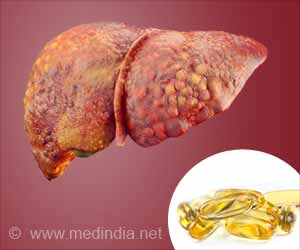Blocking contact between cancer protein on liver cells and the protein on tumor cells can prevent spread of colorectal cancer to liver - Potential therapy on way.

In vivo interaction screening reveals liver-derived constraints to metastasis
Go to source). When cancer becomes fatal, metastasis is often the cause, with nine out of ten cases attributed to this spread of cancer cells. Metastasis occurs when cells from the primary tumor travel to other parts of the body, much like seeds being dispersed. Despite advancements in treating primary tumors, the medical field still struggles to effectively combat metastasis. To date, there are currently no medications available to halt this destructive process.
‘Did You Know?
Colorectal cancer is considered the third most common type of cancer worldwide, accounting for approximately 10% of all cancer cases. It is the second leading cause of cancer-related deaths globally! #Colorectalcancer #liver #medindia’





Colorectal cancer is considered the third most common type of cancer worldwide, accounting for approximately 10% of all cancer cases. It is the second leading cause of cancer-related deaths globally! #Colorectalcancer #liver #medindia’
Advertisement
Decoding Mechanism of Liver Invasion: Regulator Proteins on Liver Cells Play a Role
Researchers have recently published findings in the journal Nature, demonstrating how colorectal cancer cells colonise the liver. These discoveries will contribute to the development of potential treatments aimed at impeding the metastatic progression. The study has been conducted by a team of researchers led by Andreas Moor in the Department of Biosystems Science and Engineering at ETH Zurich in Basel.Cancer metastasizes when cells detach from the original tumor and spread through the bloodstream to different areas of the body. “Colorectal cancer metastasises to the liver because of how our blood flows,” Moor says. Blood is first supplied with nutrients in the intestines before it goes to the liver, which then metabolises the nutrients. For colorectal cancer cells, the liver is the last stop. “They get caught in the liver’s capillary network,” Moor says.
Costanza Borrelli, a PhD student, and other colleagues from Moor's group have demonstrated that liver cells also significantly influence the ability of cancer cells to establish themselves in their new location. For more than a century, it has been understood that cancer cells, similar to plant seeds in soil, rely on their surroundings, but the specific molecular mechanisms involved were previously unidentified.
Moor and his team have found, through advanced testing on genetically modified mice, that specific proteins on the cell surface hold the key. If liver cells contain Plexin-B2 protein and colorectal cancer cells have certain proteins from the semaphorin family, the cancer cells are able to bind to the liver cells.
Advertisement
What Triggers the Metastasis of Tumor and Spread to Liver
Moor's researchers cited clinical studies in their paper, demonstrating that cancer cells with semaphorins on their surface are especially dangerous. The data from the study indicates that colorectal cancer is more prone to early and frequent metastasis to the liver when the tumor contains high levels of semaphorin.Plexin and semaphorin were previously recognized by researchers for their role in the nervous system, guiding the development of nerve cells and ensuring the correct formation of pathways. “Why liver cells also create plexin and what this protein does in healthy livers is anything but clear – and interests us immensely,” Moor says. In other words, the question of its function remains open.
Advertisement
Cancer Cells Change Their Identity and Search for Target Such As Liver
What Moor and his team have discovered, however, is that direct contact between plexin and semaphorin triggers fundamental changes in colorectal cancer cells. To break off from the primary tumour, the cancer cells have to change their identity: they free themselves from the surface layer of the intestine, or epithelium, severing their close connections to neighbouring cells.Once in the bloodstream, the cancer cells resemble those from connective tissue called mesenchyme. Yet once they find their new niche – thanks to the plexin on some liver cells – the cancer cells turn back into their sedentary form. “An epithelisation process takes place,” the researchers wrote in their paper. Moor expands: “You can spot this immediately if you look at the cancer cells, as they form invaginations similar to the folds or crypts in the intestines.” The researchers’ discovery will have an impact on more than colorectal cancer patients: further tests have shown that plexin also encourages the formation of metastases in melanoma and pancreatic cancer. For Moor and his team, this throws up many new research questions. One in particular is drawing their focus: when cancer cells cluster together to form a tumour, they also influence cells in their environment. “Cancer cells set up their own ecosystem,” Moor explains.
To prevent Metastasis, Timing is Critical!
If the attempts to inhibit the critical interaction between plexin and semaphorin are effective, it might be feasible to stop the cancer from developing new tumors in the first place. This is because during the early stages, when the relationships among the cells in this ecosystem have not yet been firmly established, tumor metastases are especially vulnerable, as explained by Moor.He appears confident that an answer lies within this “critical period of time in the development of metastases”, even though the path to any potential treatment is still long.
Reference:
- In vivo interaction screening reveals liver-derived constraints to metastasis - (https://www.nature.com/articles/s41586-024-07715-3)
Source-Medindia














